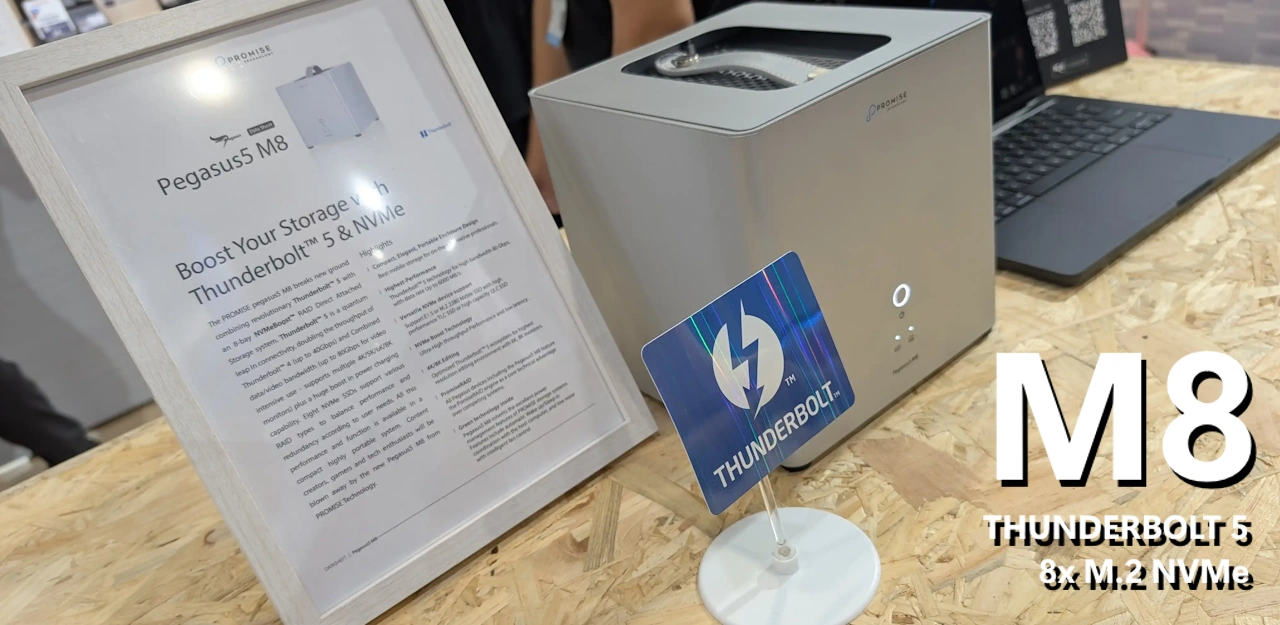TB5 M.2 NVMe Pegasus5 from Promise Revealed
In the context of the PROMISE Pegasus5 series, particularly models like the R12 and M8 that utilize Thunderbolt™ 4 and 5, it’s important to distinguish between upstream and downstream ports as they serve different roles in device connectivity. The upstream port on a Pegasus5 system is used to connect the storage unit to the host computer—typically a Mac or Windows workstation. This is the primary data pathway through which the system is controlled, data is read and written, and device management is executed.
The downstream port, by contrast, enables daisy-chaining or peripheral expansion from the Pegasus unit to additional Thunderbolt or USB-C devices. This could include external monitors, additional storage devices, or other Thunderbolt peripherals. On Thunderbolt 4-enabled systems like the Pegasus5 R12, the downstream port supports dual 4K or a single 8K monitor, allowing it to act as both a storage device and a hub for display and accessory connectivity. On Thunderbolt 5 systems like the M8 or R12 Pro, this downstream capability is expanded further, supporting higher display resolutions and bandwidth-intensive devices without reducing data throughput to the storage array. This separation ensures consistent storage performance even when other peripherals are in use.
Who are the Promise Pegasus5 M8, R12 and R12 Pro For?
The Pegasus5 M8, R12, and R12 Pro are each designed to address distinct storage requirements, aligning with varying workflows and user priorities. The M8 is suited for professionals who require high-speed NVMe performance in a compact and portable form factor. Its use of Thunderbolt 5 and full NVMe support makes it particularly effective for high-resolution video editing (4K to 8K), real-time AI model training, and mobile post-production environments. Its small footprint and low-noise design further enhance its usability for users who operate in constrained or shared workspaces, or who regularly travel with their equipment.
The R12 and R12 Pro are more appropriate for stationary, high-capacity storage needs. The R12, with its 12-bay HDD configuration, supports large media libraries and backup repositories, making it suitable for long-term storage in editing suites or enterprise archive setups. The R12 Pro extends this by incorporating NVMe SSD support alongside HDDs, offering tiered storage capabilities that appeal to users who require a balance between high throughput and large volume. This model is targeted at studios or teams managing high-bandwidth workflows such as multi-stream video processing, where simultaneous access to cached and archival data is necessary.

